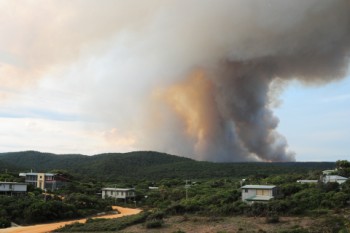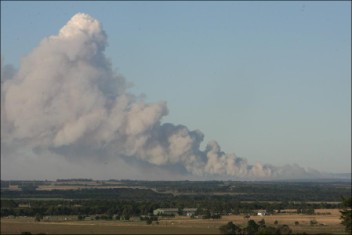Yesterday the Rapid City, South Dakota fire department successfully suppressed a grass fire that was threatening homes, containing it after it had only burned a few acres or less (map). But then, according to an article in the Rapid City Journal:
After the fire was contained, the emergency responders decided to conduct a controlled burn in the area to prevent another fire. [Assistant fire chief for the Rapid City Fire Department Mike] Maltaverne said the weather was right and the resources were already on scene.
“We can do it in a controlled setting,” Maltaverne said. “With the recent moisture and all these resources, we can eliminate all these fuels.”
Including the initial fire, about five acres of brush will be burned after the firefighters complete the controlled burn, Maltaverne said.
We were curious if the “controlled burn” was part of the suppression process, such as a burn out, or if it was an actual prescribed fire, unrelated to the wildfire. This morning Wildfire Today talked with Captain Mark Kirchgesler, the Training Coordinator for the Rapid City Fire Department, about the fire. He had not been on the scene of the fire, but said, according to the report, that the size of the fire was about 150 feet by 150 feet (about 1/2 acre) when the first engine arrived. The wildfire had been contained or controlled before the prescribed fire was initiated. The combined size of the wildfire and the adjacent prescribed was five acres.
He said it is not unusual for the fire department to conduct prescribed fires within their jurisdiction to reduce future wildfire threats to structures. When asked who has the authority to initiate a prescribed fire on the spur of the moment out in the field after controlling a wildfire, he said it can be “the incident commander in cooperation with the Assistant Chief for Operations”. He said air quality is always considered before igniting any prescribed fire within the city.
In one sense, you might envy the Rapid City FD for their ability to recognize an opportunity to reduce wildland fuels around structures and seize it immediately, with little or no paperwork and a very streamlined approval process. Those of us that have planned and conducted prescribed fires for federal or most state wildland fire agencies, don’t have the luxury of eliminating the planning process. I only hope that their policy does not backfire on them somewhere down the road.


